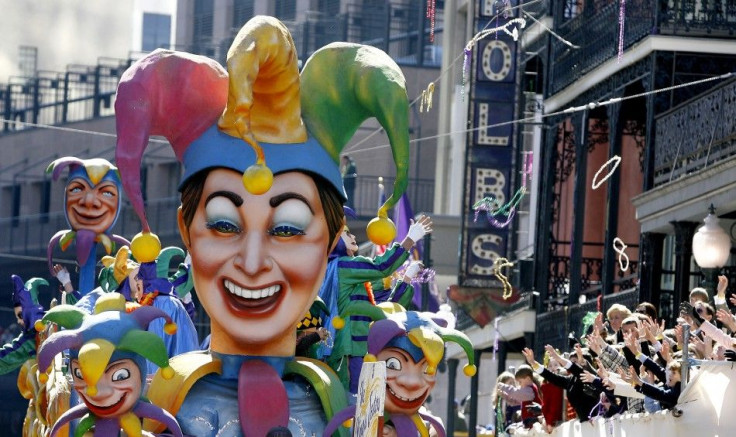Mardi Gras 2012: New Orleans Krewes & Troupes Prepare for Fat Tuesday

Mardi Gras 2012 has arrived. For those unfamiliar with the inner workings of New Orleans' famous carnival, Mardi-Gras-speak can sound a bit like a code language. There is not a parade, there are multiple parades thrown by krewes. What's a krewe? That's Mardi Gras talk for a crew - a team or organization that may spend thousands of dollars to put on a parade and ball for Carnival season.
For starters, Mardi Gras is not a one day event but rather a season that begins on Three Kings Day and climaxes on Fat Tuesday just in time for a somber Ash Wednesday.
When people from New Orleans talk about Mardi Gras it's as if they're describing a mythical fantasyland - and in a way that's what they create. Krewes range from the Knights of Chaos to the Mystic Knights of Adonis - from the Krewe of ZULU to the Krewe Delusion. The names alone make it sound like a Renaissance Faire on the moon.
In the 12 days leading up to Fat Tuesday, about one million people take to the streets of New Orleans. This brings about $300 million in direct and indirect economic impact for the Big Easy, according to a study released last year.
Some of that comes from obvious things like the 37,000 sold out hotel rooms, souvenirs, food and beverage. But a lot of the money actually comes from New Orleans residents themselves.
You have the whole interior market for those of us that are here, Jennifer Day-Sully, Director of Communications for the New Orleans Convention and Visitors Bureau, told IBTimes. You have to pay the seamstresses to make the costumes, the jewelers to create the accessories, the float makers, the invitation makers ... There's a whole side of expenditures that the tourist might not necessarily think about.
The vast majority of what you see on display during Mardi Gras parades is made in New Orleans by the people of New Orleans.
In the weeks leading up to the event, the whole town is buzzing.
We're all working on costumes, going to balls and eating king cake, Day-Sully said. And then it's time to parade.
Mardi Gras is known as a laissez-faire event, but it doesn't have to be adults only.
That's something a lot of people don't understand, Day-Sully said. It's not all 'Girls Gone Wild.' The nudity is limited to streets in the French Quarter.
A good rule of thumb: uptown is more family-friendly and manageable. The further down you go, the rowdier it gets.
Mardi Gras is really about slowing down, being with family, and watching thousands of dancers, musicians, and revelers take over the city.
Erin Stover is preparing for her first appearance in the parade with the NOLA Cherry Bombs, an all-women dancing and parading troupe united by a hardcore passion for dance, for the city and people of New Orleans, and for tutus.
We have three different dances with music and a bunch of different marching routines, Stover said. I just love the vibe of the group. It's very girl power.
The NOLA Cherry Bombs debuted in the Midsummer Mardi Gras where a lot of upcoming troupes test their skills. Since then, they've practiced twice a week in the back room of Le Bon Temps Roule, a local bar on Magazine Street.
Stover's marched with the group in some of the early weekend parades -- which began Feb. 4 -- and said she's had eight hour days from parade lineup to finish.
During the week, she needs a permit just to get to her job in the French Quarter and said she'll leave an hour early until Mardi Gras is over to make up for her tripled commute.
There are over 60 krewes participating in Mardi Gras this year and countless more dance troupes like the NOLA Cherry Bombs. There are also dozens of grass roots groups that dress up and march together.
The revelry continues until midnight Tuesday when it all ends. The police clear the streets and the sanitation crew comes out like a fine oiled machine to pick up tons of purple, green, and gold debris.
New Orleans wakes up the next day to honor Ash Wednesday, and thus the cycle of sin and redemption continues.
© Copyright IBTimes 2024. All rights reserved.






















